
Brandenburg, officially the State of Brandenburg, is a state in northeastern Germany. Brandenburg borders the states of Mecklenburg-Vorpommern, Lower Saxony, Saxony-Anhalt, and Saxony, as well as the country of Poland. With an area of 29,480 square kilometres and a population of 2.5 million residents, it is the fifth-largest German state by area and the tenth-most populous. Potsdam is the state capital and largest city, and other major towns are Cottbus, Brandenburg an der Havel and Frankfurt (Oder).
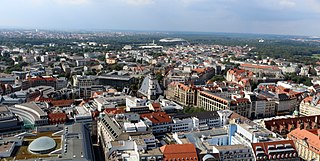
Leipzig is the most populous city in the German state of Saxony. The city has a population of 628,718 inhabitants as of 2023. It is the eighth most populous city in Germany. The name of the city and those of many of its districts are of Slavic origin.
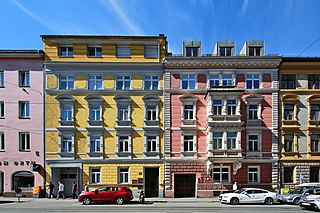
Innsbruck is the capital of Tyrol and the fifth-largest city in Austria. On the River Inn, at its junction with the Wipp Valley, which provides access to the Brenner Pass 30 km (19 mi) to the south, it had a population of 132,493 in 2018.

Lake Constance refers to three bodies of water on the Rhine at the northern foot of the Alps: Upper Lake Constance (Obersee), Lower Lake Constance (Untersee), and a connecting stretch of the Rhine, called the Lake Rhine (Seerhein). These waterbodies lie within the Lake Constance Basin in the Alpine Foreland through which the Rhine flows.

Carinthia is the southernmost and least densely populated Austrian state, in the Eastern Alps, and is noted for its mountains and lakes. The main language is German. Its regional dialects belong to the Southern Bavarian group. Carinthian Slovene dialects, forms of a South Slavic language that predominated in the southeastern part of the region up to the first half of the 20th century, are now spoken by a small minority in the area.

Suhl is a city in Thuringia, Germany, located SW of Erfurt, 110 kilometres NE of Würzburg and 130 kilometres N of Nuremberg. With its 37,000 inhabitants, it is the smallest of the six urban districts within Thuringia. Together with its northern neighbour-town Zella-Mehlis, Suhl forms the largest urban area in the Thuringian Forest with a population of 46,000. The region around Suhl is marked by up to 1,000-meter-high mountains, including Thuringia's highest peak, the Großer Beerberg, approximately 5 kilometres NE of the city centre.

Medan is the capital and largest city of the Indonesian province of North Sumatra. The nearby Strait of Malacca, Port of Belawan, and Kualanamu International Airport make Medan a regional hub and multicultural metropolis, acting as a financial centre for Sumatra and a gateway to the western part of Indonesia. About 60% of the economy in North Sumatra is backed by trading, agriculture, and processing industries, including exports from its 4 million acres of palm oil plantations. The National Development Planning Agency listed Medan as one of the four main central cities in Indonesia, alongside Jakarta, Surabaya, and Makassar. In terms of population, it is the most populous city in Indonesia outside of the island of Java. Its population as of 2023 is approximately equal to the country of Moldova.
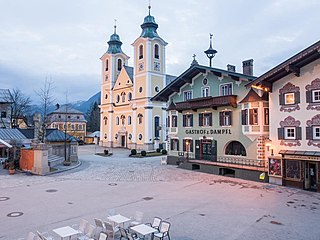
Sankt Johann in Tirol, called Sainihåns in the local dialect, is a market municipality in the Kitzbühel district of Tyrol, Austria. In the regional ductus, the last syllable of the name is stressed as "Sankt yo-Hahn'".
Bezirk Spittal an der Drau is an administrative district (Bezirk) in the state of Carinthia, Austria.

In 1724 Johann Sebastian Bach composed the church cantata Meine Seel erhebt den Herren, BWV 10, as part of his second cantata cycle. Taken from Martin Luther's German translation of the Magnificat canticle, the title translates as "My soul magnifies the Lord". Also known as Bach's German Magnificat, the work follows his chorale cantata format.
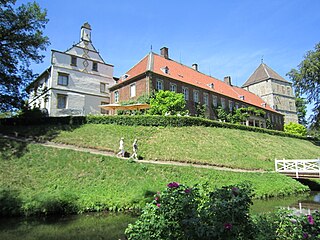
Rheda-Wiedenbrück is a city in the district of Gütersloh, in North Rhine-Westphalia, Germany.
The District of Sankt Veit an der Glan is an administrative district in Carinthia, Austria.

Bezirk Horn is a district of the state of Lower Austria in Austria.
Bezirk Perg is a district of the state of Upper Austria in Austria.
Bezirk Klagenfurt-Land is a district of the state of Carinthia in Austria.
Bezirk Villach-Land is a district of the state of Carinthia in Austria.
A tonary is a liturgical book in the Western Christian Church which lists by incipit various items of Gregorian chant according to the Gregorian mode (tonus) of their melodies within the eight-mode system. Tonaries often include Office antiphons, the mode of which determines the recitation formula for the accompanying text, but a tonary may also or instead list responsories or Mass chants not associated with formulaic recitation. Although some tonaries are stand-alone works, they were frequently used as an appendix to other liturgical books such as antiphonaries, graduals, tropers, and prosers, and are often included in collections of musical treatises.

The Kyrie–Gloria Mass for double choir, BWV Anh. 167, is a mass composition in G major by an unknown composer. The work was likely composed in the last quarter of the 17th century. The composition has two sections, a Kyrie and a Gloria, each subdivided in three movements. It has twenty-two parts for performers: twelve parts for singers, and ten for instrumentalists, including strings, wind instruments and organ. Johann Sebastian Bach may have encountered the work around 1710, when he was employed in Weimar. In the 1730s he produced a manuscript copy of the Mass.
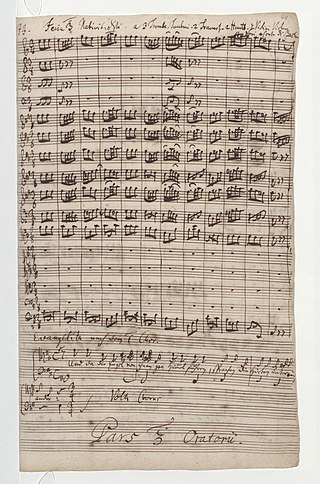
Herrscher des Himmels, erhöre das Lallen, BWV 248III, is a 1734 church cantata for the third day of Christmas (27 December) which Johann Sebastian Bach composed as the third part of his Christmas Oratorio. The Christmas cantata was first performed in 1734, in Leipzig. Bach was then Thomaskantor, responsible for music at four churches in Leipzig, a position he had assumed in 1723.














